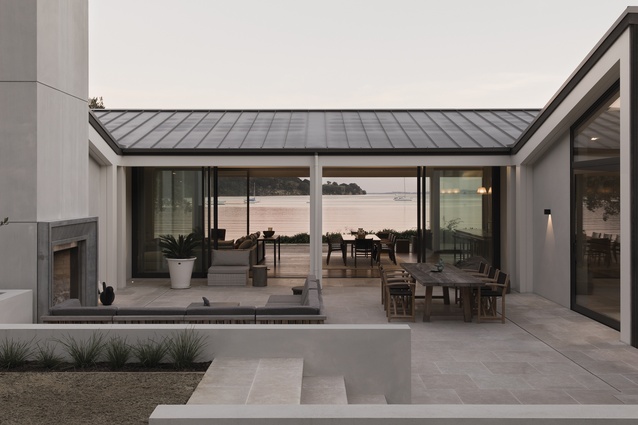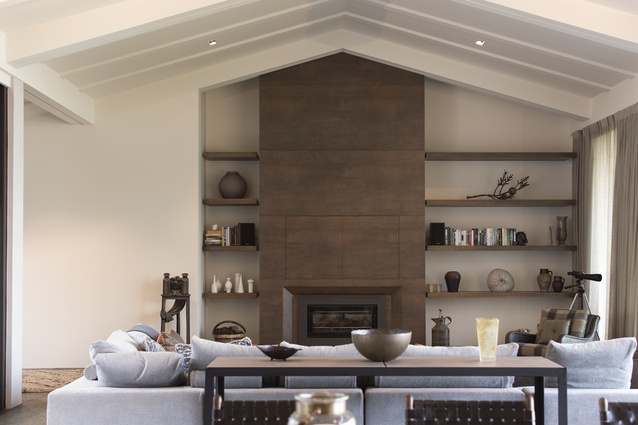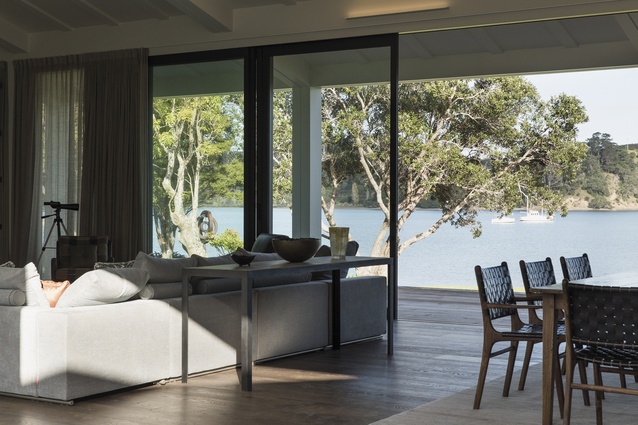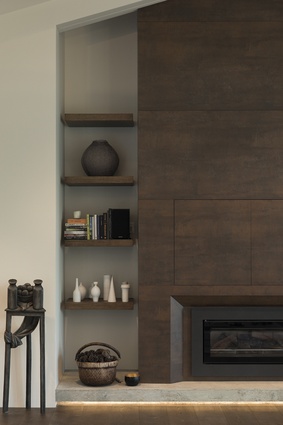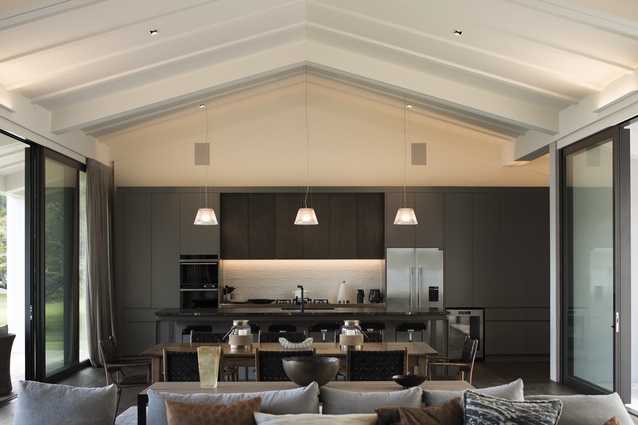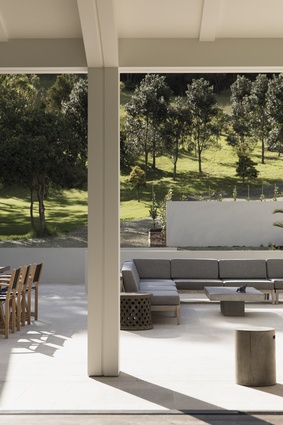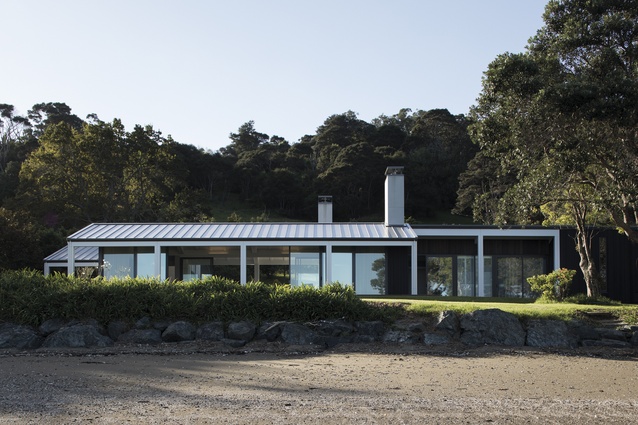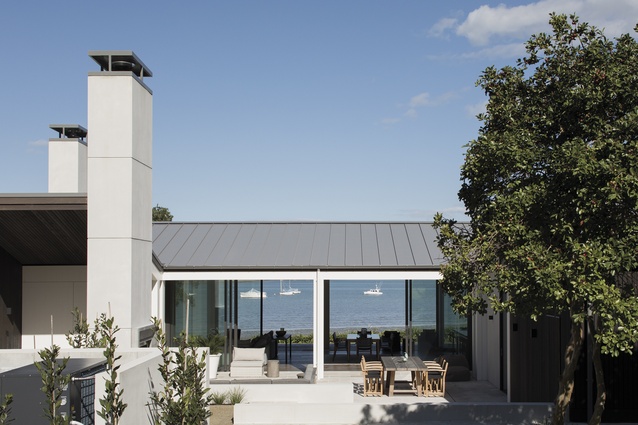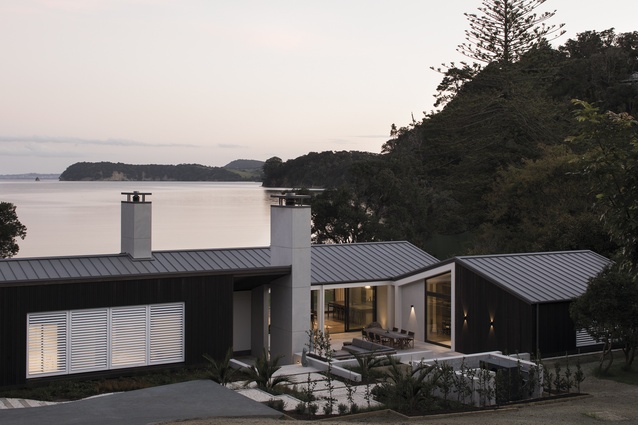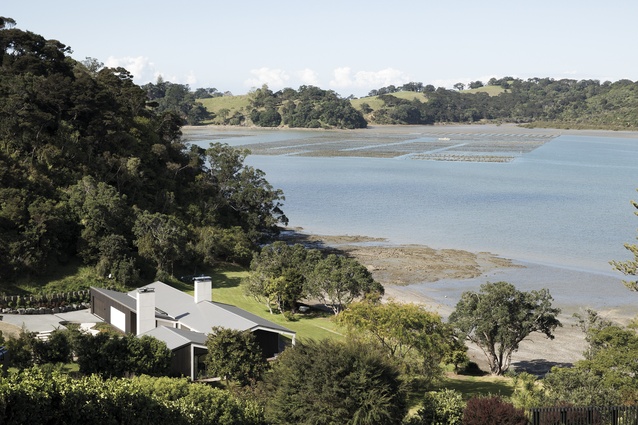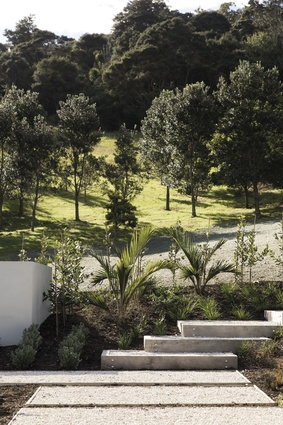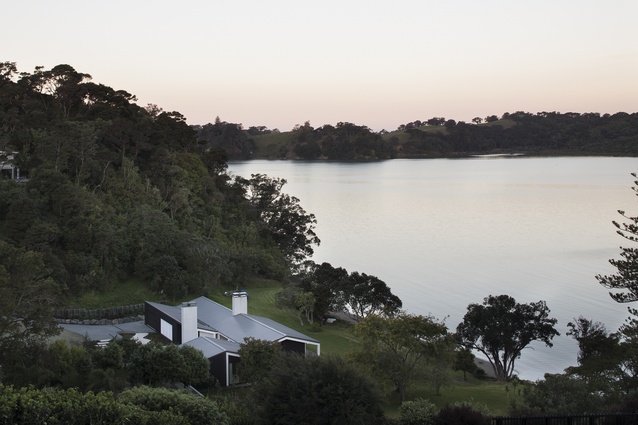Quietly modern: Mahurangi House
This idyllic site on the water’s edge in Mahurangi East, just an hour’s drive from central Auckland, called for a home that tapped into the calm serenity of the area.
A well-frequented holiday home for a couple close to retirement, this property is accessed from the ridge of the hill on what is known as Scott’s Peninsula in Mahurangi East, north of Auckland.
The house appears modest and low-lying, merging with the land and referencing the rural vernacular and history of the site. However, it is made modern by its framing and detailing and the sculptural form of its roof.
Over-scaled, timber-framed verandas, painted white, create a linear exoskeleton on top of the dark-stained, hand-sawn cedar cladding.
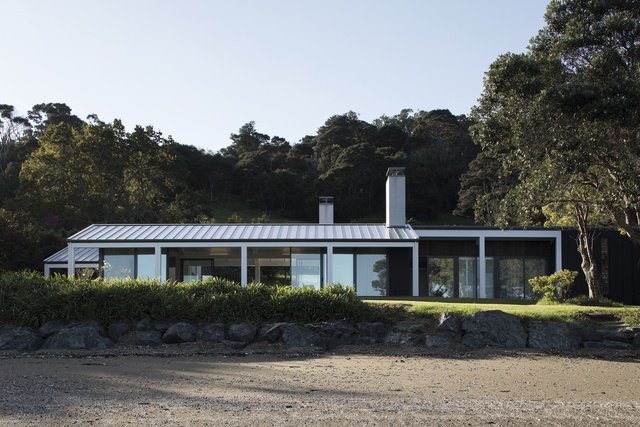
“The materiality of the cladding is legible and crafted,” says architect Jack McKinney of McKinney+Windeatt Architects. “You can see the grain. It is rough-sewn and the slats have deep negative steel detailing between them, which accentuates the sense of scale.”
Substantial columns on the verandas create a structural grid that gives the house a pleasing sense of symmetry. The off-set twin chimneys and large eaves of the verandas hint at a rural aesthetic, while providing for the intermittent climate.
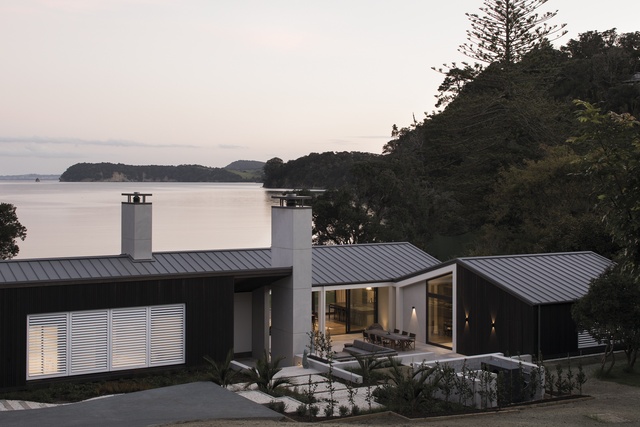
With an elevated approach, the roof forms the first impression of the house for visitors, who view it from above as they travel down to the waterfront site.
Realising the need for an exceptional roofline in reaction to this high view, McKinney created an inverted butterfly roof that plays on the idea of gables, and provides a different profile from every elevation.
“As you approach the home, you see the meandering roofline,” he explains. “Each of the ‘ribbons’ of roof is the same width, which gives a sense of cohesion. As an architectural conceit, the interesting thing was to explore how the different roof sections formed either valleys or gables.”
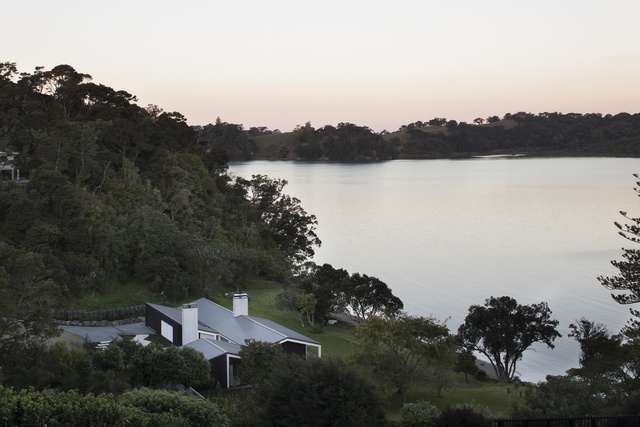
The orientation of the site, with the beach to the south, prompted the design of a courtyard on the hill side of the house to soak up the sun. The square courtyard is framed on three sides by the house and the substantial form of the blockwork outdoor fireplace. Across the back, this sense of enclosure is completed by a low wall and planting.
Entrance points to the home are informal and varied, with landscaped pathways and stairs that wind towards the large, double doors. It is also possible to enter and exit through the courtyard, which allows for casual summer living.
Floor-to-ceiling glazing at the northern and southern ends of the house allows clear views through from the courtyard to the water.
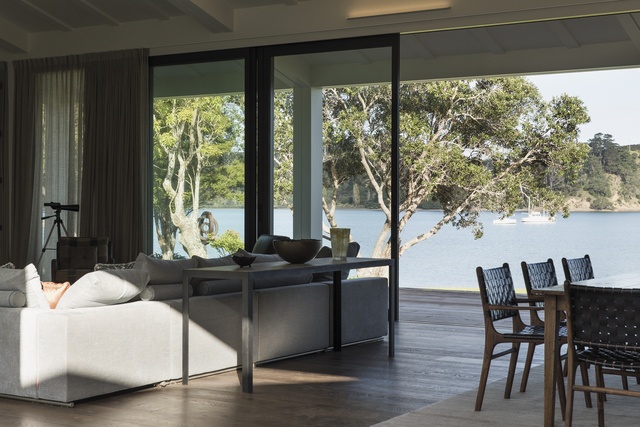
“The courtyard is a sunny, sheltered outdoor space, and the house frames the view of the bay. It was important that when you were in the courtyard, you didn’t feel as though you were missing out on the beach,” says McKinney.
The bedrooms are located on either side of the central living space. Cavity sliders connect the master bedroom with the courtyard. From within this bedroom, the homeowners can enjoy a framed view of the external fireplace as well as the beach. All the bedrooms have a sense of privacy and detachment from the living area, and two of the three spaces have their own outlook of the beach.
There is a sense of farmhouse-like domesticity in the living room, which is bookended by two sources of warmth – the kitchen and the fireplace. The kitchen is framed by the gentle gabled ceiling above.
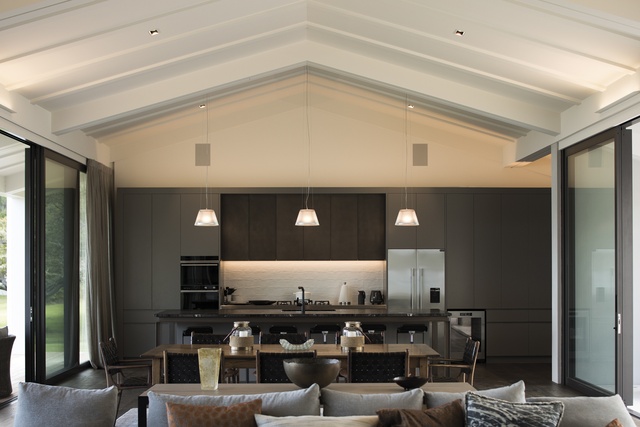
The island is designed with legs, to appear more like a table than a typical island, and the bench top is leathered granite. The kitchen cabinets carry through into a foyer space connecting to the master bedroom, which the homeowners use as a study.
The fireplace is clad is a Neolith ceramic tile in Iron Corten and features a concealed TV above the fire and a strip of LED lighting below the hearth. This dark, metallic form creates an interesting contrast with the white, blockwork fireplace of the same scale outdoors.
The sloped angle of the butterfly roof forms a reference to the lean-to seen in many New Zealand buildings. Some work went into preventing the higher wall of these sections from seeming too tall, explains McKinney.
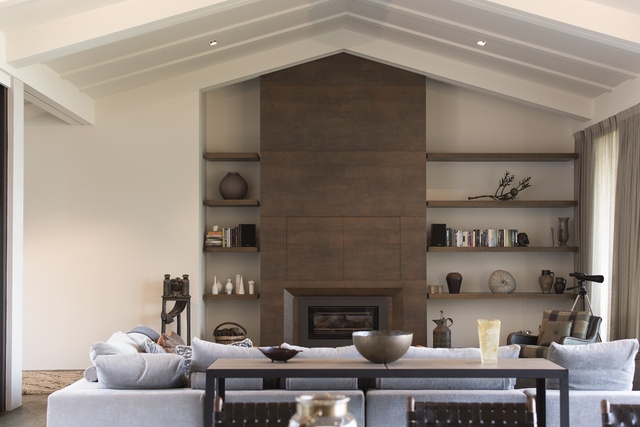
“Because the walls are kicking up in the butterfly roof areas, you have quite a high wall. Part of the solution was to bury the wall slightly to keep the scale in check. The proportions are nice because the wall is lowered.”
This is also softened by planting along the edge of the wall. The garage at the far end of the hillside elevation is de-detailed and clad in the same cedar boards as the rest of the house. The windows on this elevation are covered with louvred shutters to protect these spaces from the gaze of future homes, which will eventually be built up the hill.
Designed for all weathers and in turn well-used by its owners year-round, the genius of this house is that it appears simple, despite being carefully, almost painstakingly designed and detailed.

